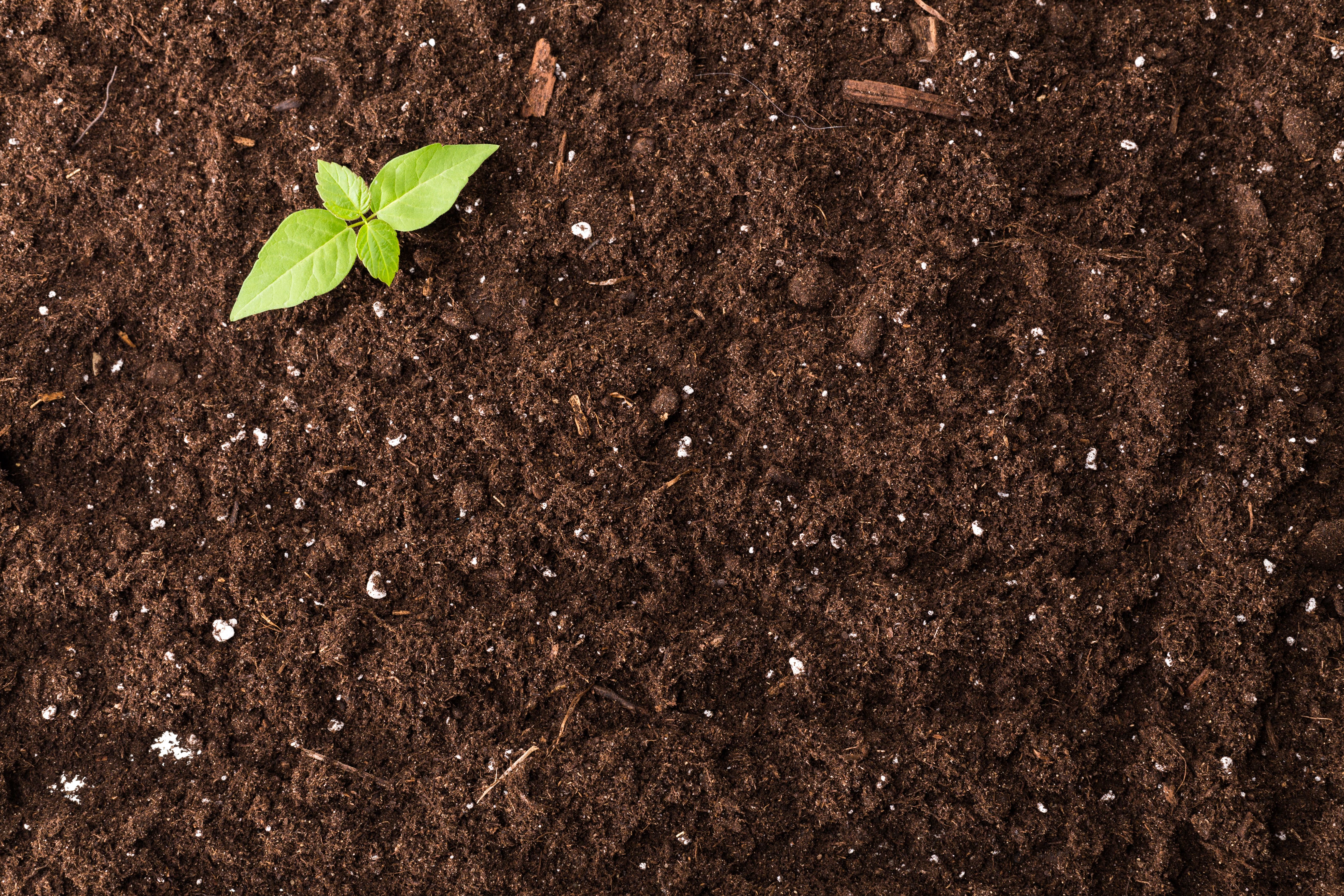One-Point Calibration LIBS Method Demonstrates Potential for Accurate Quantification of Mercury in Soil and Landfill Leachate Samples
A new one-point calibration laser-induced breakdown spectroscopy (LIBS) method was used to quantify mercury in soil in the presence of matrix effects.
Scientists at Embrapa Instrumentação in São Carlos, Brazil, have developed a method to improve the accuracy of laser-induced breakdown spectroscopy (LIBS) for quantifying mercury in soil and landfill leachate samples.
Seedling green plant surface top view textured background | Image Credit: © fotofabrika - stock.adobe.com

The study, published in the Journal of Analytical Atomic Spectroscopy, proposes the use of calibration-free LIBS (CF-LIBS) with the one-point calibration (OPC) method to reduce matrix effects in mercury quantification (1). The study revealed that the one-point calibration LIBS method demonstrated significant potential in accurately quantifying mercury in soil and landfill leachate samples.
CF-LIBS is an analytical technique used for elemental analysis without requiring a calibration curve. Instead, the OPC method is used to compensate for matrix effects and system variability. In OPC, a single reference sample is used to calculate the correction factors for each element of interest. These correction factors are then applied to the analysis of other samples to obtain accurate quantitative results. CF-LIBS with OPC has been shown to reduce matrix effects and improve the accuracy of elemental quantification in samples with distinct matrix characteristics, such as soils and landfill leachates containing mercury. Further studies are needed to validate and expand the use of CF-LIBS with OPC for other elements, matrices, and measurement conditions.
Matrix effects can significantly affect the accuracy of LIBS, a powerful analytical technique for elemental analysis. To improve sensitivity, the researchers employed a double-pulse LIBS system with parameters optimized for each of the two sample matrices. A single soil sample was used to calibrate the OPC factors, which were then applied to the CF-LIBS calculations for the other samples.
Using CF-LIBS corrected with the OPC method, the researchers achieved an average error of 4.3% in the quantification of mercury for the two sample sets, which had mercury concentrations ranging from 50 to 1000 mg/kg. This result indicates that these methods have the potential not only to reduce matrix effects but also to compensate for variations in LIBS system optimization for either matrix (soils or leachates) in the quantification of mercury.
The combination of these methods opens new possibilities for LIBS analyses, where the system can be optimized for each element and sample matrix, and the quantification can be performed with CF-LIBS, provided that the requirements for local thermodynamic equilibrium are fulfilled. However, the researchers suggest further studies with other elements, matrices, and measurement conditions are needed to validate and expand these findings.
In conclusion, the one-point calibration LIBS method demonstrated potential for accurate quantification of mercury in soil and landfill leachate samples, and could be applied in other elemental analysis studies to improve the accuracy of LIBS in the presence of matrix effects.
Reference
(1) Borduchi, L. C. L.; Menegatti, C. R.; Bastos, D. M.; Milori, P.; Filho, H. J. I.; Villas-Boas, P. R. Application of one-point calibration LIBS for quantification of analytes in samples with distinct matrix characteristics: a case study with Hg. J. Anal. At. Spectrosc. 2023, ASAP. DOI: 10.1039/D2JA00399F
Laser Ablation Molecular Isotopic Spectrometry: A New Dimension of LIBS
July 5th 2012Part of a new podcast series presented in collaboration with the Federation of Analytical Chemistry and Spectroscopy Societies (FACSS), in connection with SciX 2012 — the Great Scientific Exchange, the North American conference (39th Annual) of FACSS.